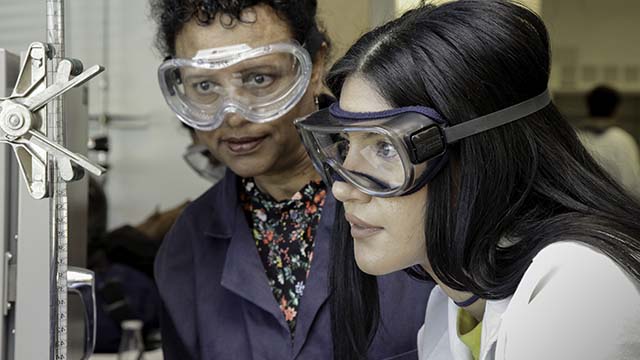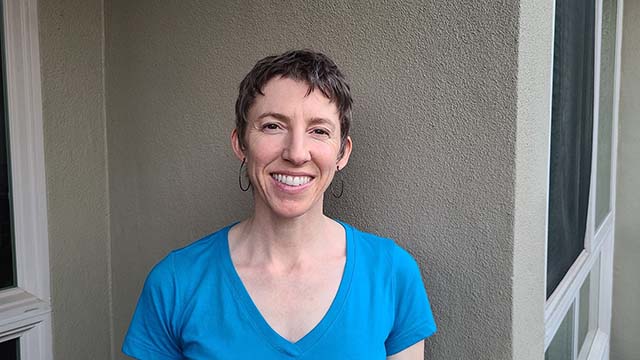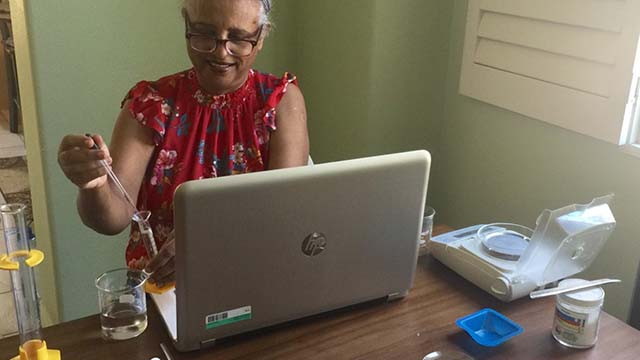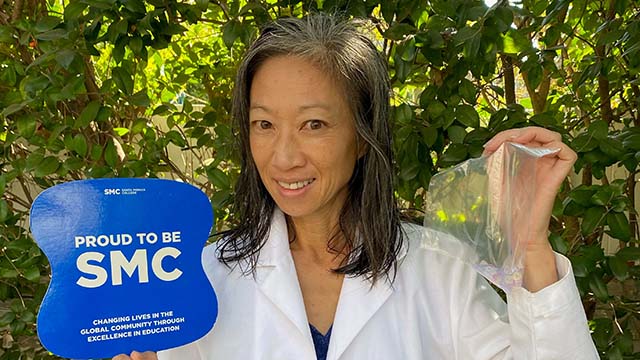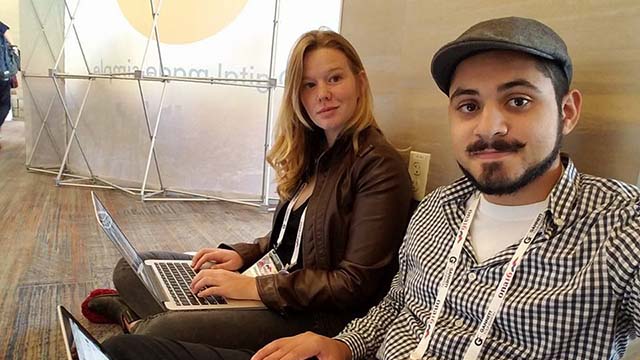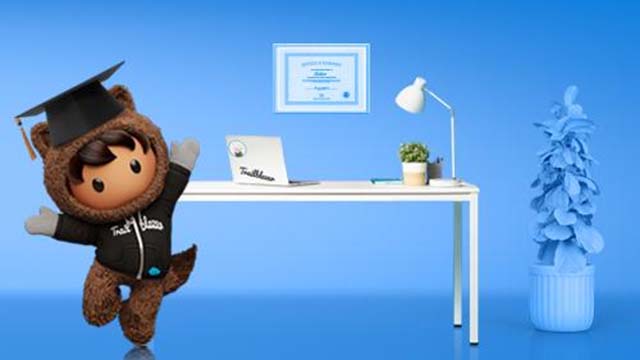Lab Results

Teaching a hands-on course like chemistry remotely has resulted in a unique learning laboratory for both faculty and students at Santa Monica College.
“This is only my second semester at SMC, and the first time I’m teaching this class,”
says Rebecca Villarama of Chemistry 19: Fundamentals of General, Organic and Biological Chemistry. “In some ways, I’m coming to this in a very similar way to the students.”
“I’ve been teaching a long time, so what’s new for me is the whole Zoom thing,” adds Roman Ferede, who also teaches Chem 19, which is aimed at students majoring in nursing or allied
health professions. “I tell my students, ‘Things are not going to go smoothly every
time. But we are here to make sure you learn what’s important.’”
For the online aspects, she admits that students are often the more knowledgeable ones.
Learning Curve
“Around March 9, I saw the writing on the wall when my daughter’s school closed,” recalls Wenise Wong, who teaches Chem 9: Everyday Chemistry for nonmajors. “My daughter and one of her friends helped me film four labs. They taught me a lot. My learning curve went through the roof.”
During the summer, the chemistry faculty regrouped to prepare for remote learning
in the fall. They were determined to ensure that students could conduct hands-on experimentation,
even if it had to be modified for at-home labs. The faculty devised experiments that
used nontoxic materials, and provided students in advance with a list of the supplies
they would need.
“We were trying to create some of what we lost in the spring,” Wenise says. “That
was our main goal. We didn’t want to take anything away from what we had planned for
the semester. We’re doing all the same labs, either by using a computer simulation,
doing an at-home experiment or having them watch videos.”
“I’m so grateful that we’re still able to give students the opportunity to do experiments
at home,” adds Madlina Babakhanlou, who teaches Chem 19. “This is a challenging course, but we’ve made it feasible and
doable. The lab is where they apply what they’ve learned.”
She, Roman and Rebecca—who all teach Chem 19 on different days—meet regularly via
Zoom to discuss ongoing improvements for the course. But teaching—and learning—chemistry
remotely remains challenging.
Work-Life-Study Balance
“I have a 1-year-old,” Madlina says, “and the work and home environments have meshed. A lot of my students have families, so they struggle with that, too.”
Alexia (Lexi) Reese—a student in Roman’s Chem 19 class—says some of the cons to online learning include
technological issues, distracting background noise, turning your residence into a
laboratory, and balancing work, life and classes.
“I’m a nanny and working with kids is really a passion for me,” adds Lexi, who is
switching to a nursing major after starting out in SMC’s Early Childhood Education program. One day, she hopes to blend her interests and work as a nurse in a neonatal
department. She was enrolled in Chem 19 and anatomy last spring but had to drop both
courses after the lockdown.
She appreciates how the faculty team has worked out the system for at-home experiments
to promote student success. “Chem 19 is very difficult if you get lost along the way,”
she says. “I commend them for being patient and making it work for us. If we’re having
trouble, Professor Ferede meets with us one-on-one to make sure we understand what
we’re doing. She’s an awesome professor.”
Despite some of the challenges, Lexi says her remote classes have led to some surprising
benefits.
“I feel like we’re getting a lot more personal interaction with our professors, which
is kind of strange,” she says. “This has actually helped me to get closer to my professor
and ask more questions. And I also feel a lot closer to the students than I did the
previous semester I took the course. We’ve formed remote study groups, and we talk
almost every day about the material and the labs coming up. We’re all in the same
situation and everyone’s willing to help each other more.”
Silver Linings
Because students answer questions privately to their professor through the Zoom chat function, it’s easier to see who is struggling while ensuring that all class members participate.
“In a regular class, if you ask a question, only one student can answer you at a time,”
Roman explains. “Now, we get 28 students answering. You get much more engagement than
in a regular class.”
Some students are more forthcoming than if they had to raise their hand in front of
their peers.
“Now, I’m the only one seeing them say, ‘I didn’t understand that, could you go over
this again?’” Rebecca says. “We’re engaging them in a way that a well-established,
smooth lab—that has all the kinks worked out—might not. If one of these new labs doesn’t
work quite as we intended, it creates discussion around what’s causing the problems,
why it’s not working the way we intended. That’s been an interesting side effect.”
“If a student is falling behind, we reach out to them to help keep them on track,”
Madlina adds, noting that one of the luxuries of remote instruction is having one
of her students attend Roman’s or Rebecca’s lab if they miss hers.
“Another silver lining is that we have students from around the world,” Wenise says.
“I have five students in Indonesia and another who is quadriplegic. I don’t know how
he would have come to lab in person. So these remote labs have opened up possibilities
for students from all over the world, all walks of life and all abilities.”




